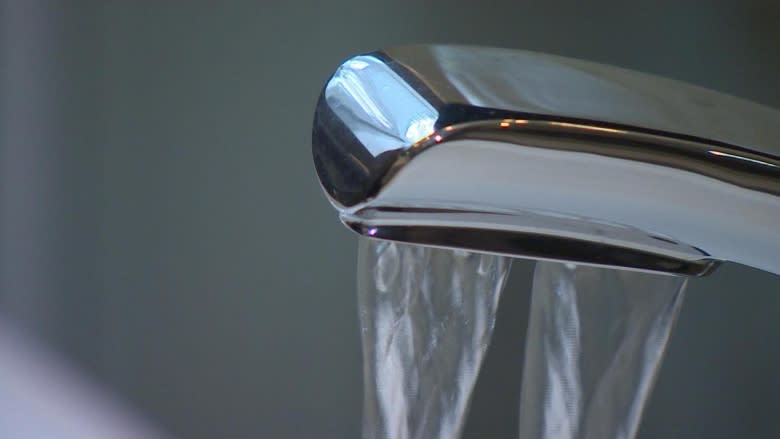Province posts locations and use of P.E.I.'s 288 high capacity wells
The P.E.I. government has released detailed information about where the province's 288 high capacity wells are located, what they're used for and how much groundwater they're allowed to extract.
The province posted the list on the government website, after CBC requested detailed information on the wells. An interactive map was recently added showing where the wells are located.
The province classifies the 288 high capacity wells in the following categories:
- Municipal central supply (i.e. cities, towns): 87.
- Aquaculture (i.e. fish plants, mussel farms): 62 (mostly salt water).
- Industrial/commercial: 48.
- Agricultural irrigation: 36.
- Heat transfer, fire: 24.
- Irrigation other (i.e. golf, soccer): 18.
- Private central supply: 13.
High capacity wells are those that draw more than 50 imperial gallons per minute (igpm). That compares to a garden hose, for example, that typically draws 5-10 gallons a minute.
Low capacity ones include about 20,000 residential wells.
The province has posted the approved extraction rate for each high capacity well, but points out that the actual amount used may be less that what's allowed.
According to the province, municipalities use, on average, about 48 per cent of their allowable amount, which is extracted year-round, compared to irrigation wells which use 4.6 per cent of their allowable amount, which is extracted from June to September only.
Even then, the department estimates only 1.4 per cent of available groundwater is used each year overall.
'Water is very valuable'
"We understand that Islanders are keenly interested in knowing how much water is being used," said Bruce Raymond, manager, water and air monitoring section, for the Department of Communities, Land and Environment.
"I think they have a good grasp that water is very valuable, that it shouldn't be squandered, and that there should be undertaken reasonable measures to conserve it and utilize it well. But I don't think they have a good grasp of the total volume of water that is flowing in Prince Edward Island,"
The details come as P.EI. politicians prepare to debate the new draft Water Act in this spring sitting of the legislature. However, MLAs won't be looking at the existing moratorium on high capacity wells for agricultural irrigation — which is capped at 36.
That moratorium will remain in place for another year, until new regulations are developed after the province obtains more scientific data, according to the environment minister. Those regulations will require balancing the calls from the farming community for better access to irrigation with the need to protect the quantity and quality of P.E.I.'s groundwater.
The moratorium was introduced in February 2002, after an exceptionally dry summer the previous year.
Expansion of metering being considered
In 2004 the province required all existing agricultural wells to be metered, and now requires meters for all new high capacity wells that are issued permits, said Raymond, adding that the irrigation numbers are reported to the province at the end of each season.
He said part of the review of high capacity wells will include a look at whether meters need to be installed on all existing high capacity wells.
Raymond thinks Islanders would be surprised at "just how little water we use over the amount of water in the groundwater system."
Most of the concern he hears is over amounts drawn from the Winter River watershed where the majority of Island's population lives, and which in recent years has seen low levels in the summer.
However, he said, those problems don't exist all across the Island.
- MORE P.E.I. NEWS | 'It's just not a strong signal': Residents in rural P.E.I. asked to test their internet speed
- MORE P.E.I. NEWS | 'I just wasn't ready to give up': Island woman waiting for double lung transplant



